Transporting a large television requires careful planning and execution. Ensure safety by utilizing appropriate equipment, protective packaging, and secure transport methods to prevent damage during transit.
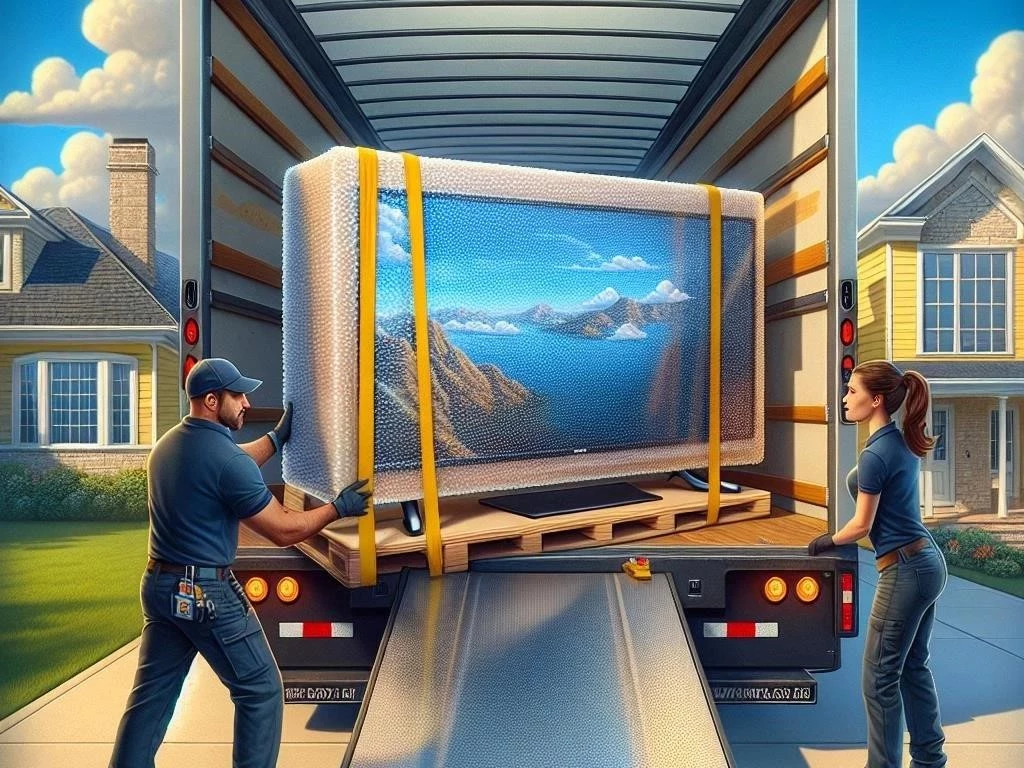
Understanding the Importance of Transportation Safety
When transporting a flat-screen TV, prioritizing transportation safety is paramount. TVs are fragile items that can easily be damaged if not handled properly. Ensuring safe transport methods can protect your investment and avoid costly repairs or replacements. Understanding weight distribution within the vehicle is essential to prevent tipping or shifting during transit. Additionally, secure TV transport involves using adequate protective packaging, such as moving blankets or foam padding, to cushion the TV from impacts. It is also crucial to consider logistics planning, including the route taken and potential obstacles. Heavy item moving requires careful coordination, especially when navigating tight spaces or stairs. By assessing vehicle space requirements and ensuring that the TV is secured properly, you can minimize risks associated with moving a large TV. Remember that the goal is to arrive at your destination with your television intact, ensuring a seamless transition to your new location.
Assessing Your TV Size Considerations
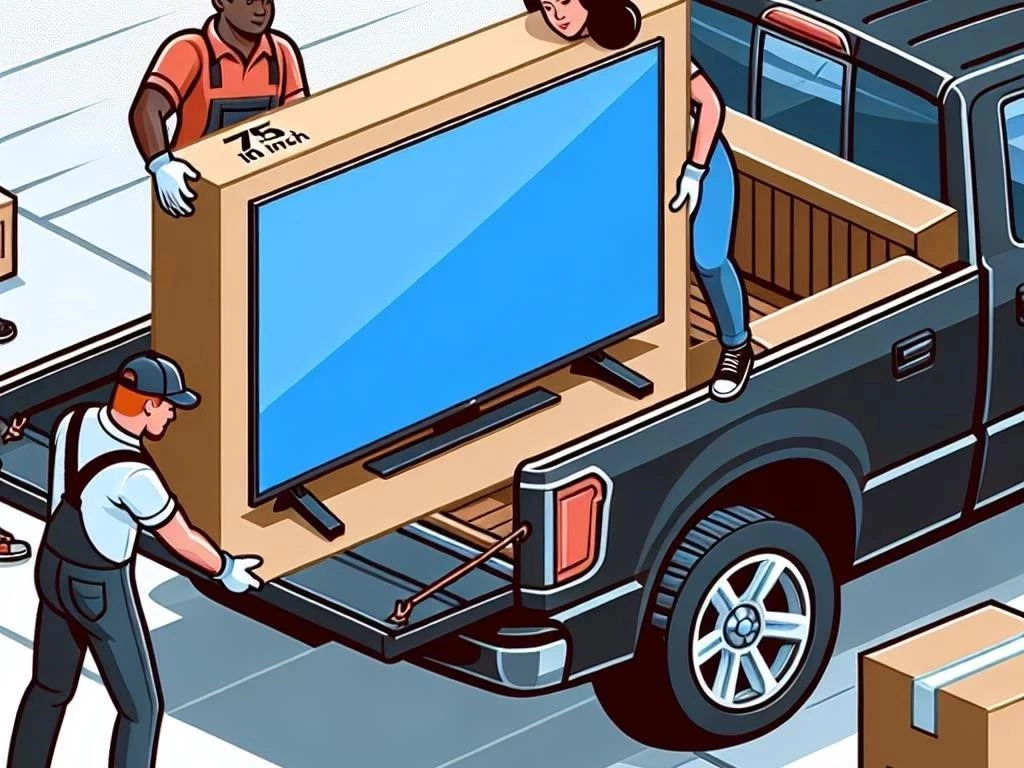
When moving a 75-inch TV, assessing its size considerations is crucial for a successful transport. First, measure the dimensions of your television, including its height, width, and depth, to determine the best handling approach. Large TV handling requires awareness of its weight and fragility, as improper lifting can lead to accidents or damage. Evaluate the vehicle space requirements to ensure that the TV fits comfortably without being forced into tight spots, which could lead to scratches or breakage. Additionally, consider the use of protective packaging, such as a sturdy box designed specifically for flat-screen TVs, which can provide an extra layer of security. It’s also essential to plan for how the TV will be positioned during transport, ideally upright, to avoid pressure on its screen. By addressing these considerations, you can significantly reduce the risk of damage and ensure a smoother moving experience.
Preparing for the Move
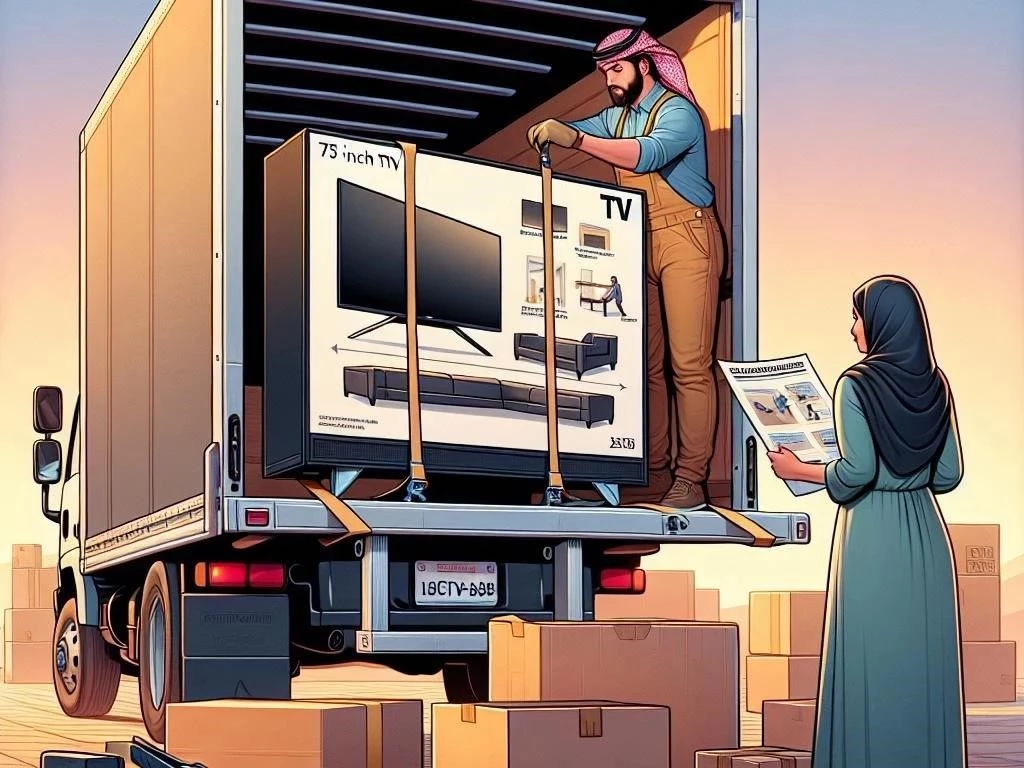
Preparing for the move of a 75-inch TV involves several essential steps to ensure a safe transport experience. Begin by gathering necessary moving equipment, such as moving straps, a dolly, and protective materials. These tools will help in securely handling and transporting the large TV. Next, focus on protective packaging, which is critical for safeguarding the TV against potential damage. Utilize moving blankets and foam padding to wrap the television thoroughly, ensuring all surfaces are cushioned effectively. Consider using specialized TV boxes, if available, for extra protection. Additionally, it’s vital to remove any disassembling furniture or obstacles in the path to facilitate easy access during the move. Clear pathways and make necessary preparations to avoid accidents. Proper preparation not only protects your TV but also streamlines the entire moving process, reducing time and effort while ensuring a successful relocation of your fragile item.
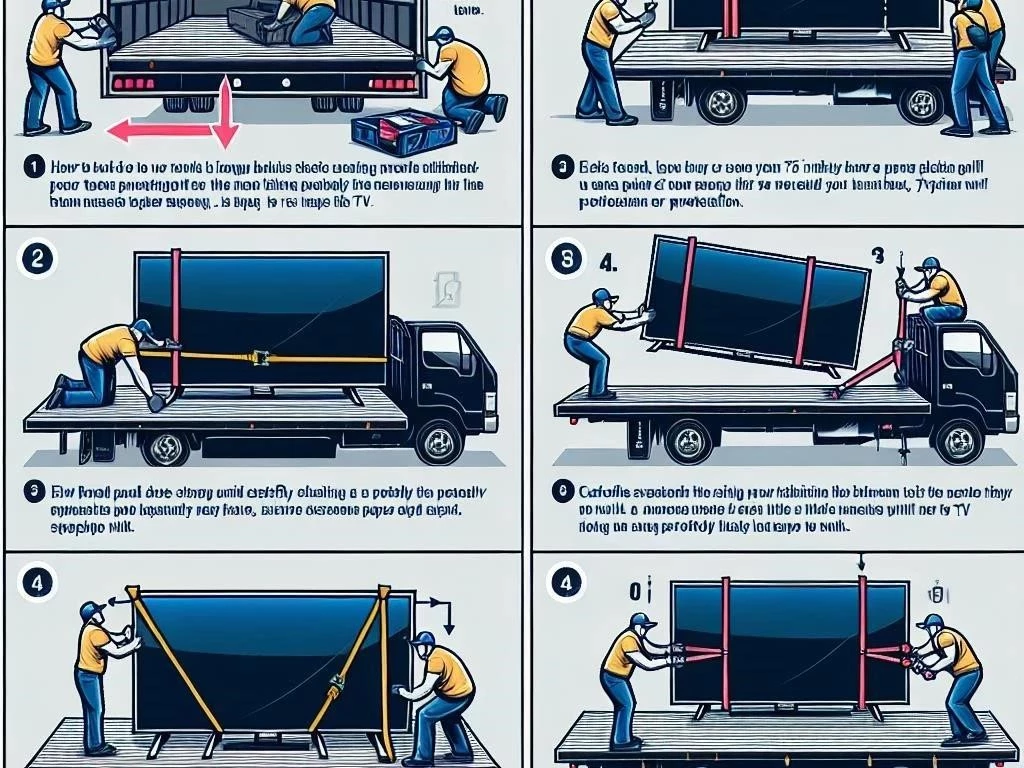
3.1. Gathering Necessary Moving Equipment

Before transporting your 75-inch TV, it’s essential to gather the appropriate moving equipment to ensure a smooth and secure process. Start by acquiring moving straps, which are crucial for maintaining a firm grip on the TV while lifting and maneuvering. A sturdy dolly is also necessary, as it will help you transport the heavy item safely and efficiently, minimizing the risk of injury. Moreover, consider investing in a set of moving blankets to provide cushioning and prevent scratches during transit. Foam padding can be used to fill any gaps in your protective packaging, further safeguarding the TV. Additionally, having bubble wrap on hand can offer extra protection for fragile corners and edges. Don’t forget tools like a utility knife for cutting packaging materials and a tape measure to ensure everything fits correctly. By preparing with the right moving equipment, you can enhance safety and efficiency during the transport of your flat-screen TV.

3.2. Protective Packaging for Your TV
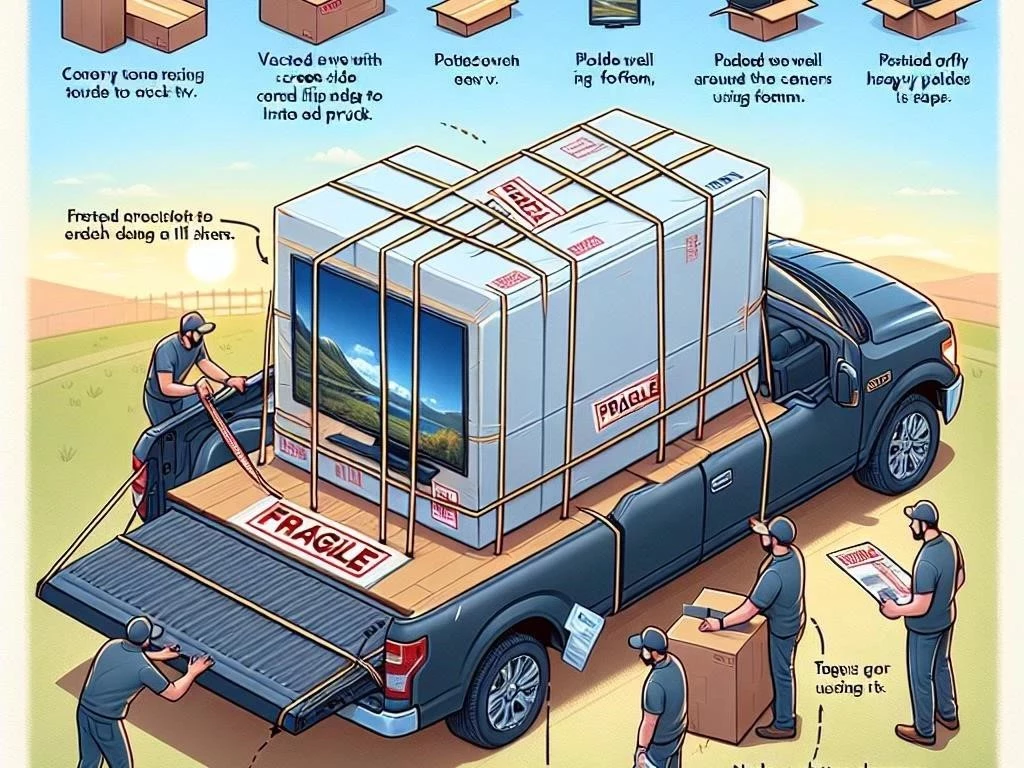
Protective packaging is vital when transporting a 75-inch TV to ensure it arrives at its destination unharmed. Start by obtaining a special TV box designed for flat-screen televisions, as it provides a snug fit and additional structural support. If a box is unavailable, use moving blankets to wrap the TV securely. Ensure that all corners and edges are adequately cushioned to prevent damage. Foam padding can be added between the TV and the blankets for extra protection. Reinforce the packaging with strong packing tape to keep everything in place during transit. It’s essential to label the package as “Fragile” to remind everyone to handle it with care. Additionally, consider enclosing the remote control and cables in a separate bag, taped to the TV, so they remain organized. By investing time in protective packaging, you can significantly reduce the risk of scratches, cracks, or breakage during the move.
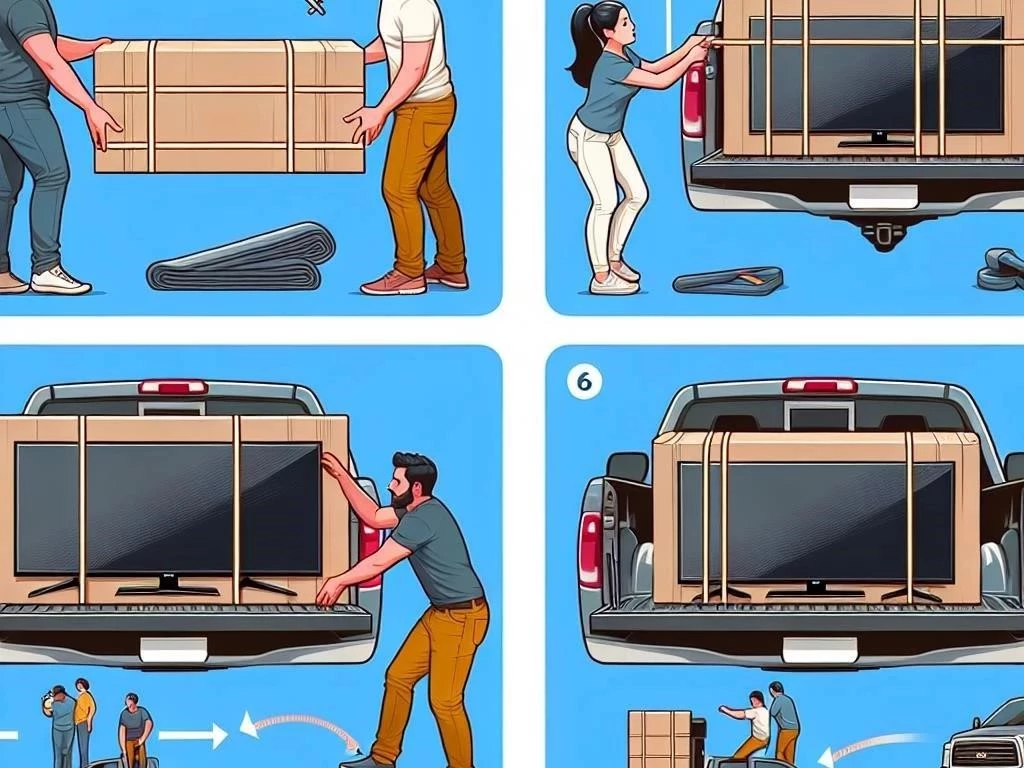
3.3. Choosing the Right Moving Blankets and Foam Padding
Selecting the appropriate moving blankets and foam padding is crucial for protecting your 75-inch TV during transport. Opt for thick, high-quality moving blankets that are designed to absorb shocks and impacts, providing a cushion for your fragile item. Look for blankets made from durable materials that can withstand wear and tear. Ensure that the size of the blankets is sufficient to cover the entire TV, wrapping it securely to prevent movement. Foam padding is equally essential; it can be used in conjunction with moving blankets to fill gaps and protect vulnerable areas, particularly the corners and edges. When choosing foam padding, opt for high-density options that resist compression, offering better protection. Additionally, make sure the foam is non-abrasive to avoid scratching the TV surface. By carefully selecting the right moving blankets and foam padding, you can greatly reduce the risk of damage during the transport of your valuable television.
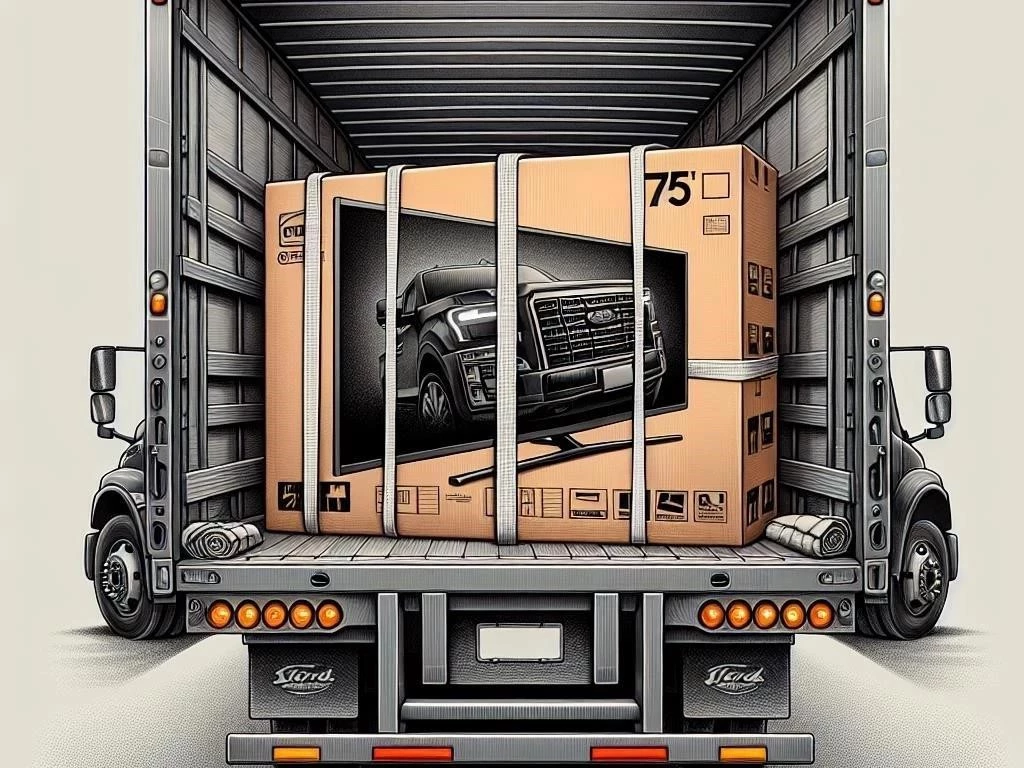
Disassembling Furniture for Easy Access

Disassembling furniture is often necessary to ensure easy access when transporting a 75-inch TV in a truck. Large furniture pieces can obstruct pathways, making it challenging to maneuver the TV safely. Begin by identifying any pieces that may need to be removed or dismantled, such as shelves, cabinets, or entertainment centers. Use appropriate tools to carefully disassemble these items, ensuring that you keep track of screws and small parts, perhaps by labeling bags for organization. This process not only clears the way for the TV but also minimizes the risk of damage to both the furniture and the television. Additionally, consider the layout of your space, planning a clear path from the room to the truck. By taking the time to disassemble furniture as needed, you create a safer environment for moving large items and can streamline the overall process, making the transition to your new location much smoother.
Planning the Logistics of Truck Loading
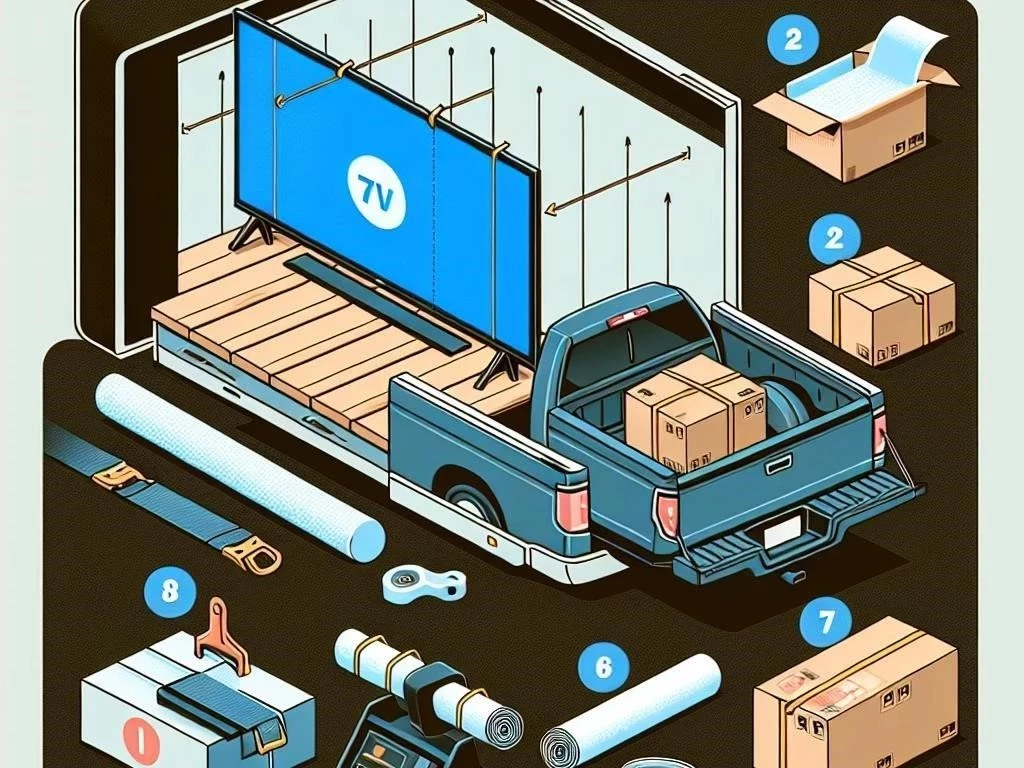
Planning the logistics of truck loading is essential for safely transporting a 75-inch TV. Begin by evaluating the truck’s layout and identifying the most suitable position for the TV. Ideally, the TV should be placed upright to prevent pressure on the screen, which can lead to damage. Ensure that the truck is free from heavy items that could shift during transit. Create a loading plan that outlines the order in which items will be loaded, prioritizing the TV as a delicate item. It’s crucial to secure the TV with straps to prevent movement while on the road; Additionally, ensure that there is adequate padding around the TV to protect it from surrounding items. Consider utilizing a ramp for easier loading if available. By meticulously planning the logistics of truck loading, you can enhance safety, minimize risks, and ensure that your television arrives at its destination in perfect condition.
5.1. Vehicle Space Requirements for a Flat-Screen TV
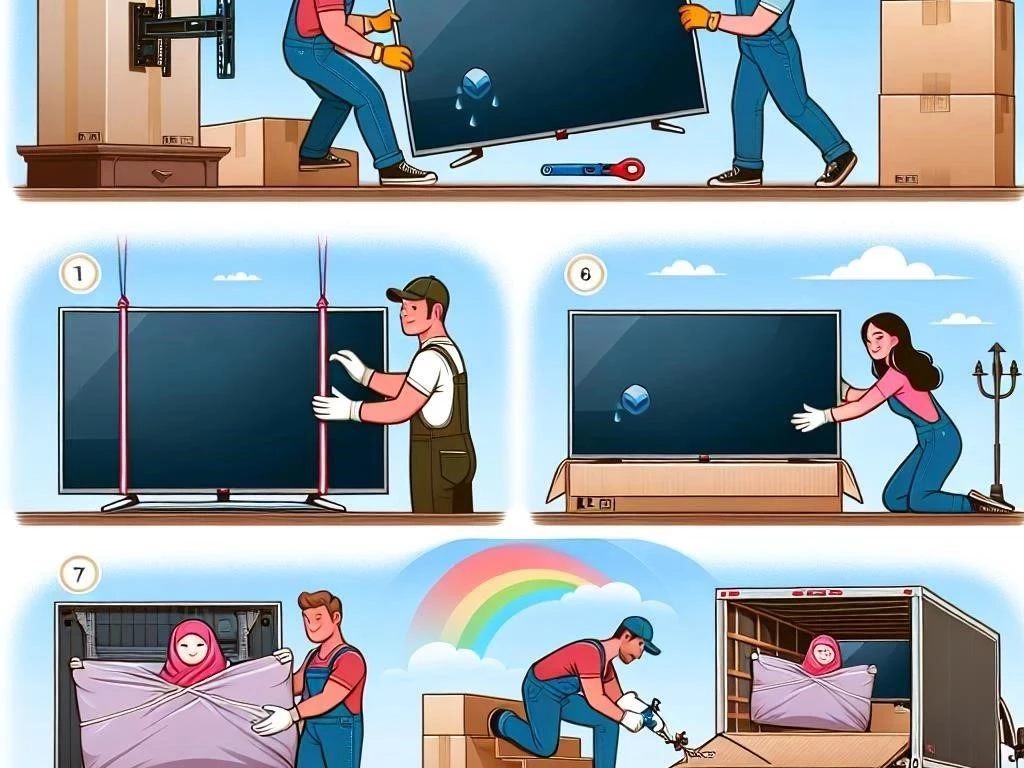
Understanding vehicle space requirements is crucial when transporting a 75-inch flat-screen TV. First, measure the dimensions of your TV, including height, width, and depth, to determine the amount of space needed in the truck. A typical 75-inch TV requires a minimum of 6 to 7 feet of vertical space when positioned upright. Ensure that the truck bed is wide enough to accommodate the TV without forcing it into tight spaces, which could cause damage. Additionally, consider the depth of the vehicle; the TV should have ample room to avoid contact with other items. It’s also essential to account for padding and protective packaging, which will add to the overall space required. Planning for vehicle space enables you to load the TV securely and with care, reducing the risk of damage during transit. By assessing space requirements beforehand, you can ensure a smooth and successful moving experience.
5.2. Optimal Truck Loading Techniques for Heavy Item Moving
When transporting a 75-inch TV, employing optimal truck loading techniques for heavy item moving is essential for safety and efficiency. Begin by utilizing a dolly to lift and move the TV into the truck, which helps to reduce strain on your back and minimizes the risk of dropping the television. Ensure the TV is positioned upright and secured against a wall or the side of the truck to prevent shifting during transit. Use straps or tie-downs to anchor the TV in place, ensuring it remains stable and protected from bumps or jolts. Additionally, distribute weight evenly within the truck to maintain balance, which is crucial when driving. Surround the TV with soft materials, such as moving blankets or foam padding, to further cushion it from possible impacts. Finally, take your time when loading and unloading to ensure careful handling, significantly decreasing the likelihood of damage to your valuable TV.
Secure TV Transport Methods
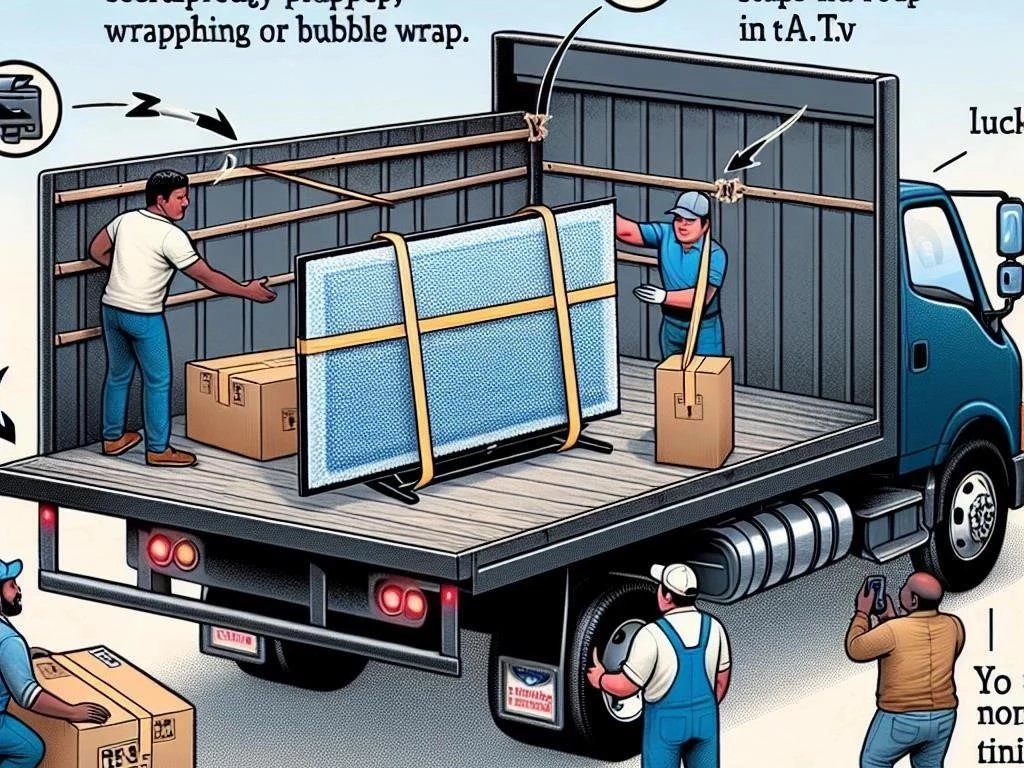
Utilizing secure transport methods is vital when moving a 75-inch TV to ensure its safety and integrity during the journey. Start by selecting a vehicle that can accommodate the TV upright, as this position minimizes the risk of screen damage. Use high-quality moving straps to secure the TV in place, avoiding any movement while on the road. Make sure the straps are tight enough to prevent shifting but not so tight that they cause pressure on the screen. Surround the TV with protective materials, such as moving blankets or foam padding, creating a cushion that absorbs shocks. If possible, position other soft items around the TV to provide additional support and protection. Ensure that the truck is driven smoothly, avoiding sudden stops or sharp turns that could jolt the TV. By employing these secure transport methods, you can confidently ensure your television arrives at its destination without damage.
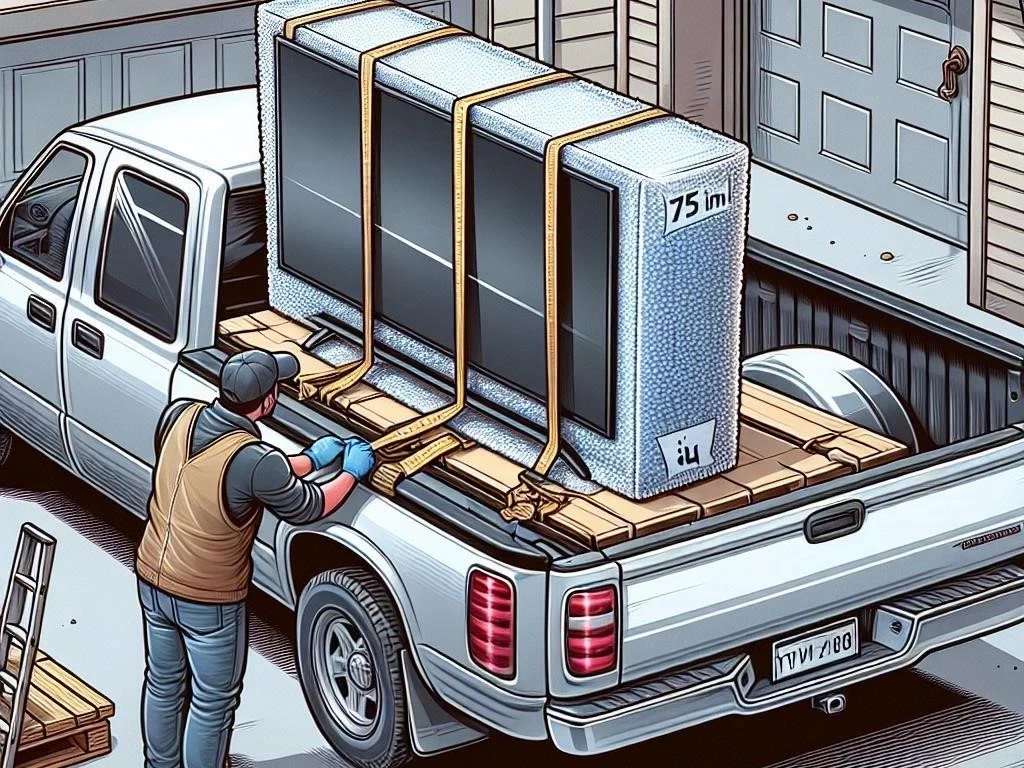
6.1. Using Straps and Supports for Stability
Using straps and supports is crucial for maintaining stability when transporting a 75-inch TV in a truck. Start by selecting high-quality ratchet straps or tie-downs specifically designed for heavy items, ensuring they can handle the weight of the television. Once the TV is positioned upright against the truck wall, attach the straps securely around the TV, ensuring they are tight enough to prevent any movement but gentle enough to avoid damaging the screen. Utilize support blocks or cushions on either side of the TV for added stability, preventing lateral movement during transit. Additionally, placing other soft items, like blankets, around the TV can help absorb shocks and provide further protection. Regularly check the stability of the straps during stops to ensure they remain secure throughout the journey. By effectively using straps and supports, you can significantly reduce the risk of damage and ensure your flat-screen TV arrives safely at its destination.
6.2. Best Practices for Fragile Items During Transit
Transporting a 75-inch TV requires careful attention to best practices for fragile items during transit. First, ensure that the TV is thoroughly protected with high-quality moving blankets and foam padding to absorb shocks. Wrap the TV securely, covering all surfaces, and use bubble wrap on vulnerable edges and corners. Placing the TV upright during transport is essential; avoid laying it flat, as this can place undue pressure on the screen. Utilize appropriate vehicle space and secure the TV with strong straps to prevent any movement. Additionally, avoid overloading the truck with other heavy items that could shift and cause damage. Regularly check the condition of the TV during breaks in your journey, ensuring that it remains secure and undamaged. Finally, communicate with anyone assisting in the move, emphasizing the importance of handling the TV with care. By adhering to these best practices, you can significantly minimize the risk of damage during transport.
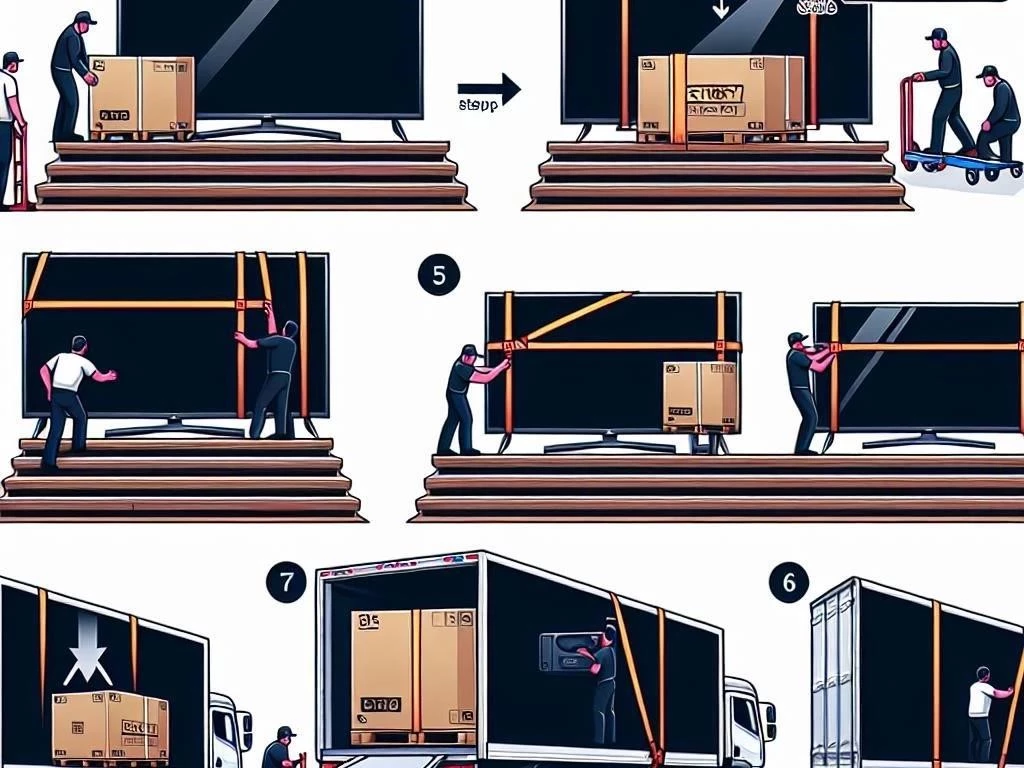
TV Shipping Considerations
When planning for TV shipping, especially for a 75-inch model, several considerations come into play to ensure a safe journey. First, select a reliable shipping method, whether using a truck or professional service, that accommodates the TV’s size and weight. Ensure the vehicle provides adequate space and protection against the elements. Secure the television using appropriate packing materials, such as sturdy boxes, foam padding, and moving blankets, to prevent damage during transit. It’s crucial to label the package as “Fragile” to inform handlers of its delicate nature. Additionally, consider obtaining insurance for the shipment to cover potential damages. If using a freight service, confirm that they specialize in transporting fragile items like TVs, and inquire about their handling procedures. Finally, plan your shipping schedule carefully, allowing enough time for delivery while considering any potential delays. By addressing these shipping considerations, you can minimize risks and ensure your TV arrives safely at its new location.
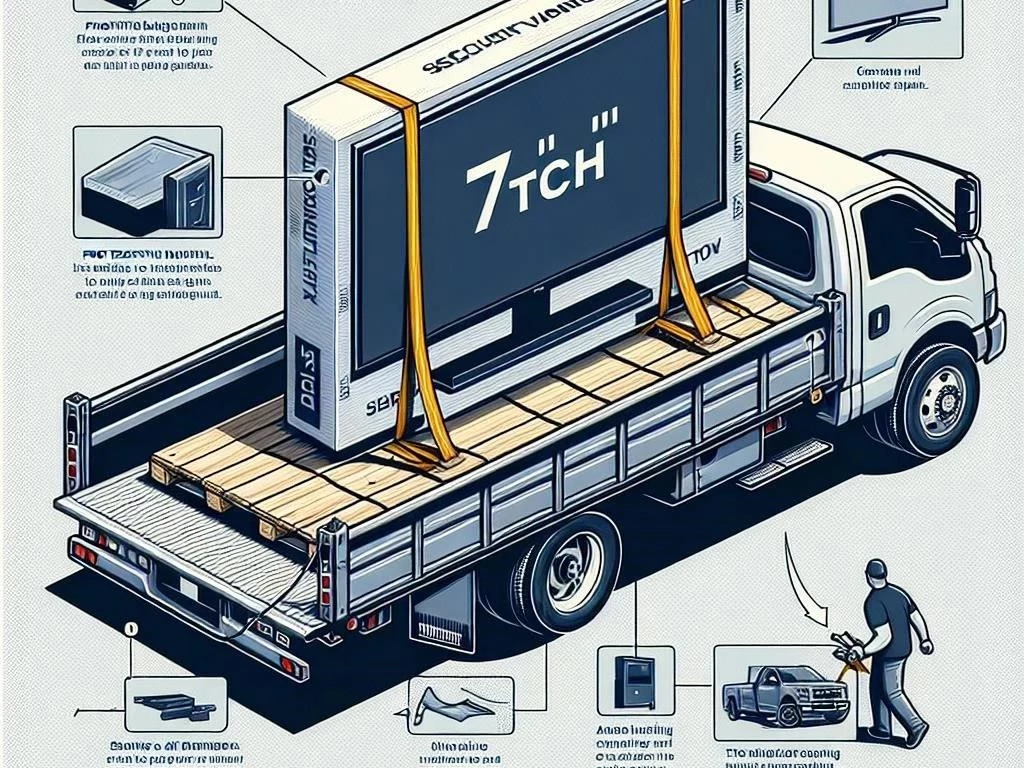
Final Checks Before Departure
Conducting final checks before departure is essential for ensuring the safe transport of a 75-inch TV. Begin by verifying that the television is securely packed and wrapped in protective materials, such as moving blankets and foam padding. Ensure that all straps are tightly secured, preventing any movement during transit. Double-check that the TV is positioned upright within the truck, as this is critical for avoiding damage. Inspect the surrounding items in the vehicle to confirm they are not at risk of shifting and impacting the TV. It’s also wise to review the truck’s route, considering any potential obstacles or rough roads that may affect the journey. Finally, ensure that any necessary tools or equipment for unloading at the destination are easily accessible. Taking these extra moments for final checks can make a significant difference in the successful transport of your television, ensuring it arrives at its new location in perfect condition.